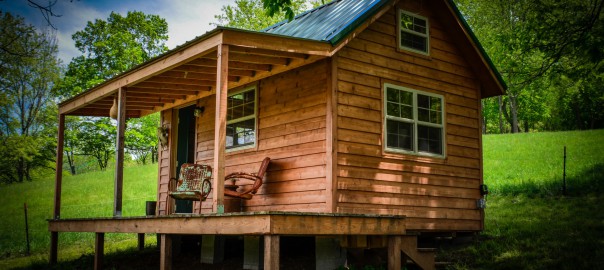Tiny Homes
 As someone who lives in a 2600 sq. ft. home in the suburbs of Colorado Springs, Colorado, I could not imagine living in anything smaller than where I currently reside. My husband and I are the only two who currently live in our home. Some may say it is much too large for just two people, but we are completely happy and dream of someday upgrading to an even larger scale home. Although we do not have any children who live with us, we bought our home knowing we would have guests and we wanted to have a lot of space for guests and for us as well. We have lived in a much smaller location, an apartment that made us feel like we were walking all over each other. We were not satisfied with such small living quarters, so we opted to buy a home that was bigger than where we were living at the time.
As someone who lives in a 2600 sq. ft. home in the suburbs of Colorado Springs, Colorado, I could not imagine living in anything smaller than where I currently reside. My husband and I are the only two who currently live in our home. Some may say it is much too large for just two people, but we are completely happy and dream of someday upgrading to an even larger scale home. Although we do not have any children who live with us, we bought our home knowing we would have guests and we wanted to have a lot of space for guests and for us as well. We have lived in a much smaller location, an apartment that made us feel like we were walking all over each other. We were not satisfied with such small living quarters, so we opted to buy a home that was bigger than where we were living at the time.
With that being said, over the last several years, tiny homes have become increasingly popular and in high-demand. A tiny house is defined as a home that is less than 1000 sq. ft. Some may be more familiar with the term “small house movement”. The small house movement is the term used to describe the architectural and social movement that advocates living simply in smaller homes. Tiny houses range from 400 to 1000 square feet, but some instances have been seen where the homes are less than 100 sq. ft.
Why would someone want to live in such a small home? The answer is quite simple, really. Small or tiny houses are more affordable and economically friendly. In this day and age, people are constantly looking for ways they can save an extra dime, or reduce their expenditures. If an individual or a family buys a tiny home, they can expect to spend less than $25,000. That amount alone will significantly reduce a mortgage, allowing for homes to be paid off much quicker than a typical 30-year loan would allow. Even if a family buys a tiny home and still pays monthly payments towards it as though they had a mortgage, the home would be paid off in less than two years. Therefore, allowing the family or individual to place that residual money elsewhere, like a retirement fund, or college fund for children. Tiny homes are enabling people to better plan for their future on a long-term basis without having to worry about a mortgage for 30+ years.
The concept of a tiny home is plausible. The long-term effects of investing in a petite home are legitimate. The idea of reducing my living quarters where I am most comfortable and am able to relax is not something that I, personally, am interested in. Fortunately, each individual is able to make the decision that is best conducive to their lifestyle, family style, and planning for the future. Although it is an investment that allows for an excellent return, paying my mortgage on my 2600 sq. ft. home is something I will stick to, for now anyway.